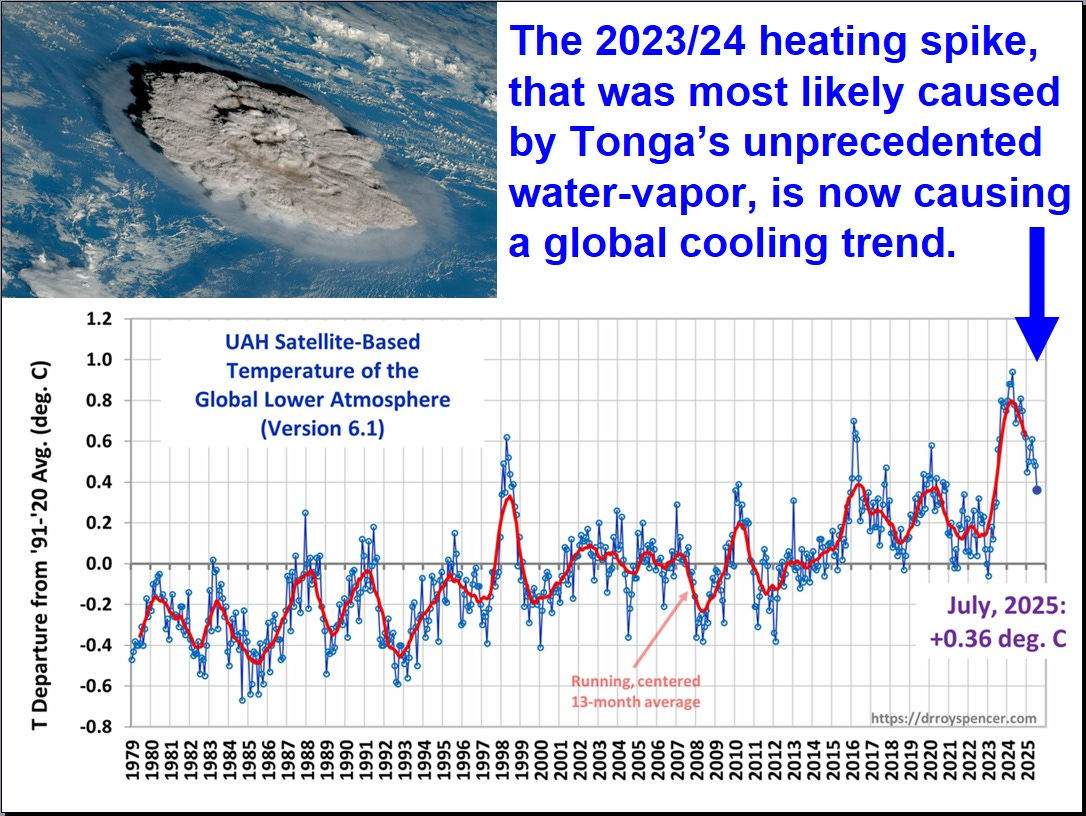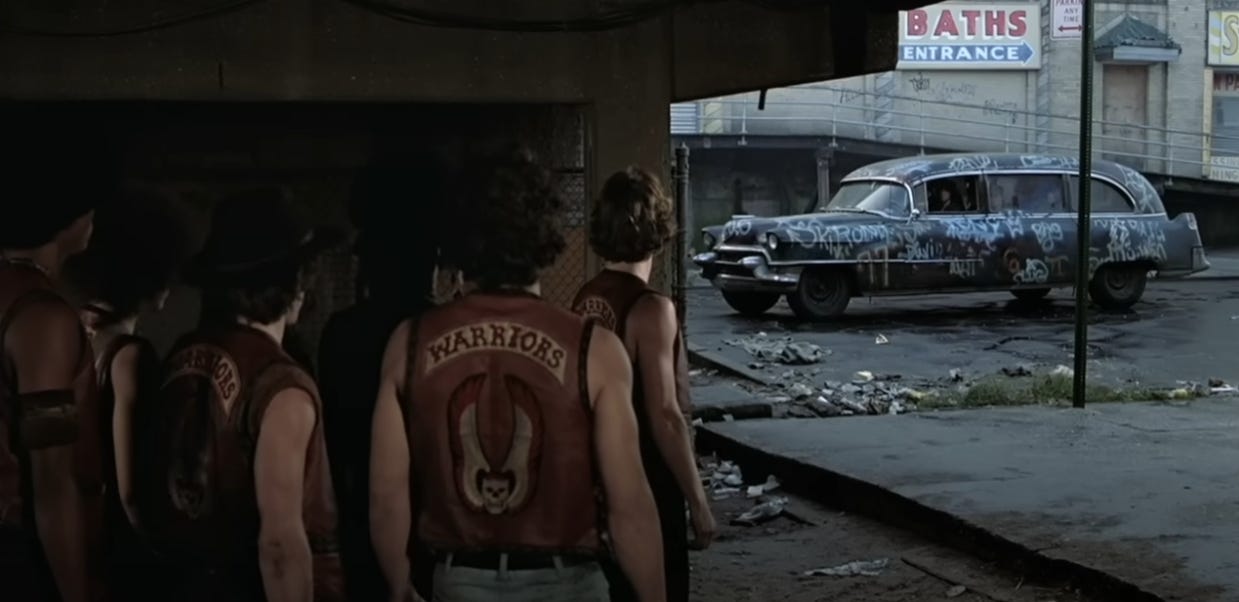A special thanks again to Darrell Thomas for his invitation to speak on the Vancouver Resource Investment Conference YouTube channel. I am writing this summary to organize my thoughts and so any new subscribers can find my old energy writeups more easily.
The Energy Thesis:
Some forms of energy are too short-cycle for them to make sense as a part of a global commodity supercycle. Who could look at shale for the last fifteen years and think that they underinvested? If anything the opposite is true.
But other forms of energy are long-cycle, and have had their access to the capital markets cut off by an ESG scam that permeated our capital markets. In Canada, for example, oil companies found their access to the bond market completely cut off when their supreme court ruled that land remediation was superior to bond holders. In West Virginia, Illinois, and Kentucky and several other states, thousands of megawatts of coal electricity capacity has been taken offline, only for electricity prices to rise 25% to 30% immediately afterward. Portfolio managers found industries such as coal completely uninvestable in order to satisfy score rankings implemented by Klaus Schwab’s Davos cronies. Schwab has now been succeeded by Larry Fink of Blackrock, and I can’t for the life of me understand why activist lawsuits haven’t targeted Fink specifically for his abdication of his fiduciary responsibility, but I digress.
Energy has been the new tobacco, with huge swathes of the capital markets avoiding it for non-economic reasons. This means that there is a potential for outsized returns. Coal in particular also has the potential to be the new whale oil, and the most profitable years for whale oil occurred when the supply had substantially declined resulting in higher average prices for the few surviving whalers. See how the price of whale oil rose only after volumes fell in the chart below, creating a ten year window of outsized profitability.
The new electricity demand from the artificial intelligence revolution is going to cause at least a medium term demand for every megawatt of capacity that we can scrape together, hopefully succeeded by a new generation of more modern and safer nuclear baseload electricity.
Beef and Leather:
There is a market dynamic referred to as beef and leather, and the concept is that ranchers raise cattle based on the price of beef alone. The price of leather has no bearing on the size of the beef herd, and leather is sold for whatever it will fetch, without regard to the cost. Fashion demands for couches, purses, and jackets drive leather prices, and the supply is completely unresponsive.
In energy, this dynamic is present in associated natural gas from shale oil. Oil is the king of energy commodities, it is stable at room temperature, and shipped easily all over the world, with moderate storage costs. But the associated gas which comes along with shale oil is much more difficult and expensive to transport and store, resulting in trapped supply and disparate pricing. Export terminals were built to handle this excess gas, but it remains to be seen if the energy demand from AI will be strong enough to make those exports less economic.
The Maturity of Shale:
The most economic shale basin, the Permian, is not as young as it once was. In response to rising costs of extraction per barrel of oil, producers have innovated longer lateral well length and are using more and larger explosives to fracture the rock. As a result, wells are starting to last longer, but are yielding a higher percentage of associated gas. Also, a wave of mergers and acquisitions have consolidated acreage into the hands of the supermajors, who have reduced rig count in order to extend inventory life. The smaller producers focused on production in order to fetch a higher multiple at sale, but the larger producers want their acreage to last for decades. Some analysts are going so far as to claim that the Permian is in terminal decline due to immutable laws of geology, but that is too bold of a claim for me. The history of the US is the history of innovation.
Offshore:
Since the start of the shale revolution, oil prices crashed, and with them crashed the offshore drilling economy. It has been a very long winter for offshore, but finally the marginal cost per barrel of oil is cheaper offshore than in the shale patch. The offshore drillships probably cost somewhere between $1 billion and $1.4 billion to build these days, nobody really knows because nobody has built one in so long. The typical life is 30 years, but they can be extended by 5 years a maximum of four times with an extended dry dock. Day rates have risen from around $200,000 per day to around $400,000 per day since I started my position in Transocean (RIG), and the stock price has gone from $2 to $8 and back to $2. It is one of those positions that seems to me to be inevitable but painful. I am not enthusiastic about jackups, the supply is not as restricted as deepwater, the construction costs are lower, and the time to build is shorter. If there was a significant squeeze in jackup day rates, the market could respond more quickly, perhaps in as little as three years. If deepwater day rates squeeze, it could take five years or longer for the market to respond.
My original writeup on Transocean was retweeted by Tommy Deepwater, and 15,000 people saw it. It single-handedly convinced me that substack could be a full time occupation, and not just something I was doing for relief in between submitting applications.
Why Transocean $RIG is better than Valaris $VAL or Noble $NE.
Transocean, RIG, is the market leader and technology leader in offshore oil and gas services. Just think of the Deepwater Horizon in the Gulf of Mexico, or better yet, don’t think about the Deepwater Horizon. You can find a recap on the offshore thesis at the end of this post.
I also recently updated the thesis here:
Deepwater Update Q1 2025: Transocean $RIG, Valaris $VAL, and Noble $NE
We have just had quarterly earnings calls for the three major deepwater offshore drillship companies, Transocean (RIG), Noble (NE), and Valaris (VAL). While the market seems to be panicking over the price of oil, offshore is long cycle stuff, oil futures prices are still in the mid $60’s, and the futures prices are in contango. Offshore commitment is for years, and the breakevens are below shale, with almost 90% of projects having a breakeven below $50 a barrel vs $65 for shale, give or take.
Onshore:
I don’t trust my ability to time the energy market’s cyclicality well enough to want to own energy Exploration & Production (E&P) companies with fast decline rates. This has led me to focus more on oil services than E&P. There are inexpensive long life, slow decline, E&P assets, particularly in the Canadian tar sands. I probably am overdue to write about one of them. My choice for energy has been a bit of a dog so far. I was very interested in the European natural gas production of Vermilion Energy (VET). But since that time, we have had three consecutive warm winters, my banana trees here in Tampa haven’t had any frost damage for three years! The phenomenon has been so extreme that I even resorted to following meteorologists on Twitter. There are good odds that this recent warm spell was caused by the water vaper from the Hunga-Tonga underwater volcano. If an eruption of that size had been above sea-level, the ash likely would have cooled the planet significantly, instead we were dramatically above trend, but it looks to be reversing. Will we finally have a cold winter this year and see European natural gas prices in the stratosphere? Pennsylvania just saw 34 degrees Fahrenheit, 1.1 degrees Celsius for my international friends, and it is still August.
My writeup on Vermilion can be found here:
When the stocks you love don’t love you back, Vermillion Energy $VET edition.
Hey ChatGPT, please dunk on Vermillion Energy in the style of Shakespeare’s Sonnets 88-90.
In the time since I’ve owned VET, they have paid down debt, and then taken that debt back out to make an enormous Canadian natural gas acquisition. So now VET has a smaller share count, increased production, and large exposure to two natural gas markets, Canada and the EU.
Vermilion Energy: Acquisition, Disposition, Takeover Target? $VET, $VET.TO
In December of last year, Vermilion Energy (VET) announced the acquisition of Westbrick, an oil and gas company operating in the Deep Basin portion of Alberta. The acquisition was for CAD 1.075 billion, and Westbrick had been producing approximately 50,000 barrels of oil equivalent per day. Vermilion believes that they can increase that production to 60…
Onshore Services:
My choice for onshore services has been Profrac Holdings (ACDC). I love a good rollup, and ACDC has positioned themselves in the top three frac fleet providers. Their biggest risk remains taking themselves private, but I believe they have more to gain by staying public. It has been a painful period in energy for these last two years, and ACDC is no exception.
Stairway to Heaven or Highway to Hell? ProFrac Holdings $ACDC
The market has been very unusual this past quarter. Realized volatility is outpacing anticipated volatility by so much that the buyers of options are making more money than the sellers of options. For the entire history of the options market, this has never happened before. On average, options are a transfer of wealth from the buyer to the seller, but l…
As lateral lengths increase and shale decline rates have improved somewhat, I have started to consider which companies sell the best razorblades in the shale patch. Currently, about 20% of new wells have 15,000 foot laterals, up from around 5,000 feet in 2015. A three mile lateral might only take one frac fleet, but it uses more sand and more explosives. You can find writeups on my substack for Forum Energy Technologies (FET), Smart Sand (SND), Mattr Co (MATR.TO), and Oil States International (OIS).
Coal:
I never quite found the thermal coal miner that really rang my bell. Coking coal is an industrial commodity, and doesn’t quite fit this energy theme, but Warrior Met Coal (HCC) has such a privileged market position that I chose it anyway. It is rare for a smaller company to have their assets in the first quartile of the cost curve, usually the top tier assets get acquired by the larger competitors. But coal is so hated by the environmental gestapo, that even coking coal is taboo. So HCC can have all three of their assets in the 1st quartile of costs, plus the coal is very high quality (low volatile compound content), and they have very close access to a deepwater port. Even though coking coal isn’t my favorite commodity, HCC’s market position is so good, and the price is so cheap, how can anyone turn away?
Warriors, come out to play: Warrior Met Coal $HCC
The eagle mascot is taking the day off. After reading about the brutality of the labor union strikes surrounding Warrior Met Coal (HCC) from 2021 to 2023, where a judge fined the labor union $13 million for property damage and security costs, and 41 workers were blacklisted from returning to work due to the violent tactics used to intimidate their line…
Uranium:
Now that our new tech overlords want cheap baseload electricity to build their new tower of Babel, the regulatory regime has finally stopped preventing us from progressing toward the future. I mentioned in part 1 that I don’t like metals that can be mined in-situ, supply can be brought online too quickly. But in the case of uranium, local permitting and not-in-my-backyard politicians are still capable of limiting supply. I wrote a three part series on uranium covering Energy Fuels (UUUU), Uranium Energy Corp (UEC), and my personal favorite company in the uranium space, although I wrote about it at $40 per share and not $170, Centrus Energy (LEU). I feel like the whole uranium space is expensive now, but I don’t know if it’s due for a pullback, or if I just have anchoring bias.
The Uranium Tourist Guide Part III: Paywalled
Thank you to everyone who has retweeted or restacked my articles, the exposure goes a long way towards helping me to build this business. I am strong believer in free samples, but it is my current policy to have one paywalled article per week, and I try to choose the best idea of the moment. It just so happened that this particularly promising opportunity was the last of my planned series on uranium.
Limited Partnerships:
A lot of my subscribers do not want the tax hassle of investing in partnerships. I understand, but at the same time, there are amazing opportunities if you can get past having a K-1 on your taxes. It especially surprises me that people are so against having an extra step on their taxes, when the MLP structure allows you to have tax deferred income in the form of return of capital and depletion deductions, all while clipping a double digit income yield. My personal favorite is Black Stone Minerals (BSM), and unlike uranium, I feel like BSM is super cheap right now and people should grab it with both hands.
Drill Baby Drill, or Else: Black Stone Minerals $BSM
Welcome to the “Probably Not a Value Trap” series where I discuss businesses with a 10%+ dividend yield which I believe probably won’t get cut and why, but don’t come after me on Twitter if they do.
In the market today, a lot of sectors have taken off, and energy is one of the few places that still feels cheap. I don’t know when the energy cycle will turn, but I do know that it is cyclical, and it can’t stay at supply destruction pricing forever. The cure for low price is low prices, and we have been taking that medicine for two years already.













That Tower of Babel line is great. I fear uranium and, to a lesser extent, nat gas and coal stocks have become levered to the AI trade. Look how much they declined during the DeepSeek scare in January. I am a big fan of the Canadian energy stocks and recently bought VET. Have owned SU for a long time.
Hi Steve, thank you for the update! I share many of your views, but as much as I consider E&P cheap I think that in the debate we do not talk enough (or at all) about the fact that one day Russia may come back to the market. Their low breakeven doesn’t concern you at all? The West will try to be disconnected forever from Moscow’s supplies?